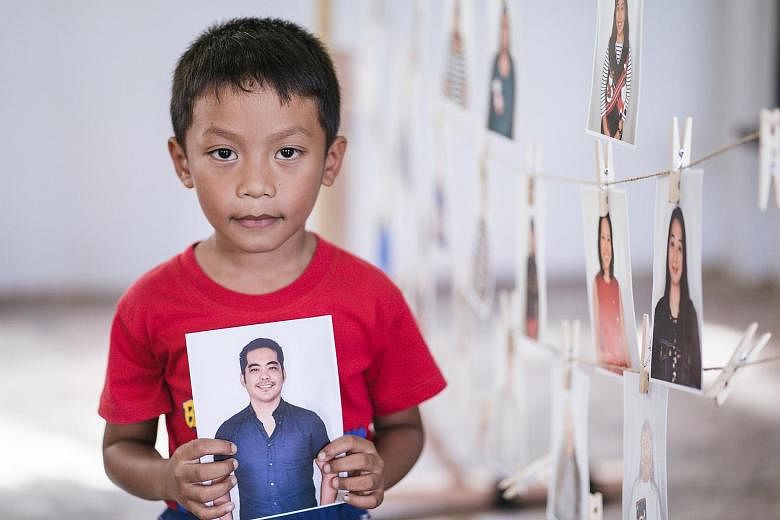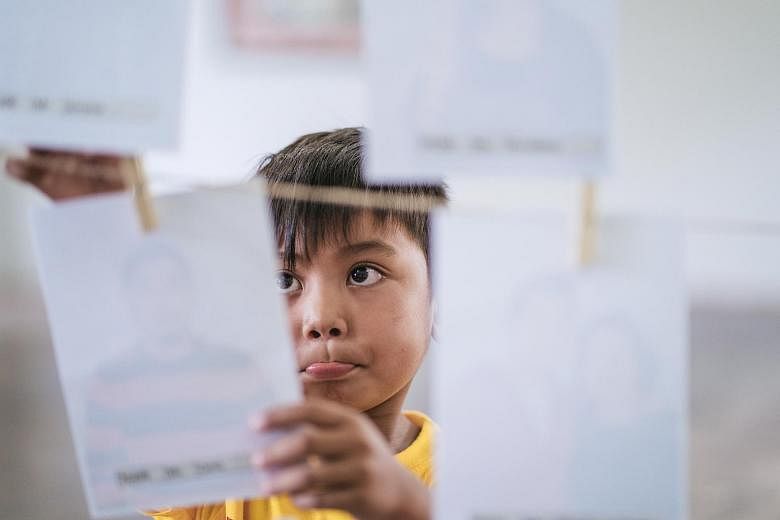MANILA - For years, World Vision has relied on a standard model to support its programmes. Sponsors browse through folders containing photos of children in poor, under-served communities, and pick out a child they want to help.
This year, the Seattle-based Christian charity group has been flipping the script. It is letting the children choose their sponsors.
People interested in sponsoring a child with monthly payments have their photos snapped. Their photos are then sent to communities World Vision is helping, and the children there pick those they feel they have a connection with.
World Vision has dubbed this role-reversal "Chosen".
"Chosen puts the power to choose their sponsor in the hands of the child," said Mr Edgar Sandoval Sr., president of World Vision in the United States.
The children are no longer passive recipients of aid. They are empowered. They start a relationship on their own terms. From "pick me", the children can now say, "I choose".
That has led to a deeper bond between the sponsors and the children.
One child, Eunice, eight, who lives in an outlier village in the Philippines, said she chose a woman who looked like a doctor she saw on TV. She picked her because she wanted to be a doctor herself.
Adrian, 11, said the young woman she chose looked like an older cousin she had not seen in a while.

Charian, just five, said she just liked the headband with the reindeer's antlers the woman in the photo she selected was wearing.
Most of the other children said they thought the people they saw in the photos looked kind, or pretty, or they just liked the way they smiled.
"Chosen" began in the United States.
Members of churches in Indiana, Kentucky and Chicago were paired with over 2,000 children in Mexico, Guatemala and Kenya via the programme. In these places, the experience has been the same.
"We're hearing from our field staff that when a kid walks away with a photo of their sponsor, it makes that sponsorship very real," Mr Sandoval told the online news site Vox.
World Vision, one of the world's largest non-profits working in global health and development, has been replicating that experience in the Philippines.
A senior staff member, who declined to be named because she was not authorised to speak to journalists, said World Vision, with its new and fresh approach to child sponsorship, has been able to tap a younger demographic that saw the standard model as too passive.
She said there has been an uptick in people signing up, especially after they see videos of children holding photos of their sponsors, with faces lit up and smiling broadly, in places like Kenya and Guatemala.
"Some were crying," she said.
This month, World Vision organised events to get help for hundreds of children in Santa Maria, a district in Laurel town, in Batangas province, 80km south of Manila.
The district has some 2,000 inhabitants. Most work in construction. Some work as caddies at a nearby golf course. Others tend small farms where they grow yam, taro, pumpkins, ginger and other root crops.
"The land is not fertile enough," said Ms Aileen Hernandez, 42, a child monitor for World Vision whose eight-year-old son, Argel, was recently paired with a sponsor.
World Vision has adopted one school in Santa Maria that can take in 300 students. The school has daycare, and provides classes from kindergarten to Grade 6.
From Grade 7, the children will have to take classes in a school about 7km away. For some, that means walking for over two hours every day. There's no bus, jeepney or motorised rickshaws that ply regularly to Santa Maria. The roads leading to the district are so narrow, strewn with loose rocks and often muddy that the only way in and out is by motorcycle.
A motorcycle, for most families, is the most valuable possession they can own. With it, they can send their children to school, and they can get to work.
Out of 40 students who will set off as a class in kindergarten, only half will make it past Grade 12. About a dozen will finish college.
World Vision is trying to improve on those figures.
Each of the group's sponsor gives 750 pesos (S$20) a month. It's a modest sum. But for families barely earning 3,000 pesos a month, that means a lot.
None of the money goes directly to the children.
World Vision uses it to fund teaching aids like flatscreen TVs, and facilities such as electric fans and faucets that the school needs.
It goes to providing extra classes that help students with their English proficiency, and maths and science skills. For the sponsored children, these classes are their only opportunity to get their hands on a computer or a tablet.
"A tablet helps them to learn faster," said the school's principal, Mr Noel Benson, 47.
The children do get things they can call their own, and associate directly with their sponsors. They get bags, notebooks and raincoats at the start of every school year.
"At least we don't have to worry about buying those things anymore," said Ms Hernandez.




